
Looney Tunes is an American animated franchise produced and distributed by Warner Bros. It began as a series of short films that originally ran from 1930 to 1969, concurrently with its partner series Merrie Melodies, during the golden age of American animation. Following a revival in the late 1970s, new shorts were released as recently as 2014. The two series introduced a large cast of characters, including Bugs Bunny, Daffy Duck, and Porky Pig. The term Looney Tunes has since been expanded to also refer to the characters themselves.

What's Opera, Doc? is a 1957 American Warner Bros. Merrie Melodies cartoon directed by Chuck Jones and written by Michael Maltese. The short was released on July 6, 1957, and stars Bugs Bunny and Elmer Fudd.

Merrie Melodies is an American animated comedy short film series distributed by Warner Bros. Pictures. It is the companion series to Looney Tunes, and featured many of the same characters. It originally ran from August 2, 1931, to September 20, 1969, during the golden age of American animation, though it was revived in 1979, with new shorts sporadically released until June 13, 1997. Originally, Merrie Melodies placed emphasis on one-shot color films in comparison to the black-and-white Looney Tunes films. After Bugs Bunny became the breakout character of Merrie Melodies and Looney Tunes transitioned to color production in the early 1940s, the two series gradually lost their distinctions and shorts were assigned to each series randomly.

Hare Brush is a 1955 Warner Bros. Merrie Melodies animated short directed by Friz Freleng. The short was released on May 7, 1955, and stars Bugs Bunny and Elmer Fudd.

A Wild Hare is a 1940 American animated comedy short film directed by Tex Avery, produced by Leon Schlesinger, and distributed by Warner Bros. as part of the Merrie Melodies series. The film was released on July 27, 1940, and features Elmer Fudd and Bugs Bunny, the latter making what is considered his first official appearance.
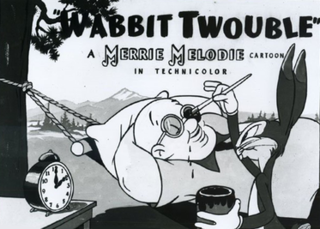
Wabbit Twouble is a Merrie Melodies cartoon starring Bugs Bunny, produced by Leon Schlesinger Productions and released on December 20, 1941, by Warner Bros. Pictures.

Elmer's Candid Camera is a 1940 Warner Bros. Merrie Melodies cartoon short directed by Chuck Jones. The short was released on March 2, 1940, and features Elmer Fudd and an early Bugs Bunny prototype.
Rabbit Seasoning is a 1952 Warner Bros. Merrie Melodies cartoon directed by Chuck Jones. Released on September 20, 1952, the short stars Bugs Bunny, Daffy Duck and Elmer Fudd.

Looney Tunes Golden Collection: Volume 1 is a DVD box set that was released by Warner Home Video on October 28, 2003. The first release of the Looney Tunes Golden Collection DVD series, it contains 56 Looney Tunes and Merrie Melodies cartoons and numerous supplements. The set won the Classic Award at the Parents' Choice Awards.

The Old Grey Hare is a 1944 Merrie Melodies cartoon directed by Bob Clampett. The short was released on October 28, 1944, and features Bugs Bunny and Elmer Fudd.

Easter Yeggs is a 1947 Looney Tunes theatrical animated short. The cartoon was released on June 28, 1947, and features Bugs Bunny and Elmer Fudd. The title is a play on "Easter eggs" and on "yegg", a slang term for a burglar or safecracker. The voice and characterization of the Easter Bunny in the short is a reference to a character that Mel Blanc performed on the Burns and Allen radio show, the morose Happy Postman, even including the character's catch phrase, "Remember, keep smiling."
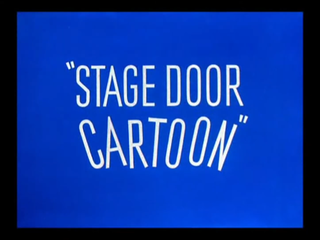
Stage Door Cartoon is a 1944 Merrie Melodies cartoon directed by Friz Freleng. The short was released on December 30, 1944, and features Bugs Bunny and Elmer Fudd.
The Unruly Hare is a 1945 Warner Bros. cartoon in the Merrie Melodies series directed by Frank Tashlin and written by Melvin Millar. The cartoon was released on February 10, 1945 and stars Bugs Bunny and Elmer Fudd. The film was one of only two Bugs Bunny cartoons directed by Frank Tashlin at Warner Bros., the other being 1946's Hare Remover.
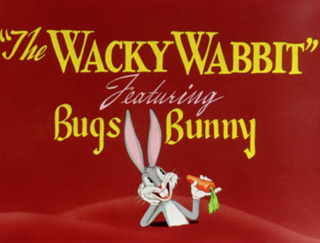
The Wacky Wabbit is a 1942 Merrie Melodies cartoon directed by Bob Clampett. It stars Bugs Bunny and Elmer Fudd.

This Is a Life? is a 1955 Warner Bros. Merrie Melodies animated cartoon directed by Friz Freleng, written by Warren Foster, and produced by Edward Selzer, with music directed by Milt Franklyn. The short was released on July 9, 1955, and stars Bugs Bunny. The voices were performed by Mel Blanc, Arthur Q. Bryan, and June Foray in her first work for Warner Bros. This is one of the few Bugs Bunny cartoons whose title does not contain Bugs, bunny, rabbit/wabbit or hare.

Elmer J. Fudd is an animated cartoon character in the Warner Bros. Looney Tunes/Merrie Melodies series and the archenemy of Bugs Bunny. His aim is to hunt Bugs, but he usually ends up seriously injuring himself and other antagonizing characters. He speaks in an unusual way, replacing his Rs and Ls with Ws, so he often refers to Bugs Bunny as a "scwewy" or "wascawwy (rascally) wabbit". Elmer's signature catchphrase is, "Shhh. Be vewy vewy quiet, I'm hunting wabbits", as well as his trademark laughter.
This is a listing of all the animated shorts released by Warner Bros. under the Looney Tunes and Merrie Melodies banners between 1940 and 1949.
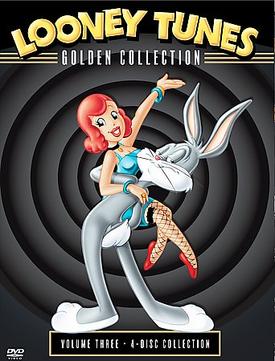
Looney Tunes Golden Collection: Volume 3 is a DVD box set from Warner Home Video that was released on October 25, 2005. It contains 60 Looney Tunes and Merrie Melodies theatrical short subject cartoons, nine documentaries, 32 commentary tracks from animators and historians, 11 "vintage treasures from the vault", and 11 music-only or music-and-sound-effects audio tracks.
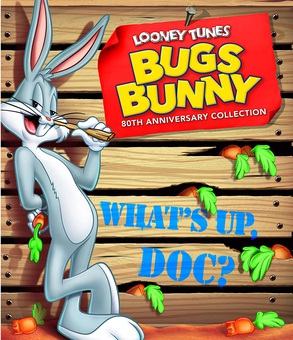
Looney Tunes: Bugs Bunny 80th Anniversary Collection is a Blu-ray Disc box-set released by Warner Bros. Home Entertainment on December 1, 2020. It contains 60 Looney Tunes and Merrie Melodies shorts starring Bugs Bunny and numerous bonus features and supplementary content. The set's packaging includes a slip book, a booklet, and a collectible Bugs Bunny Funko! POP doll.















